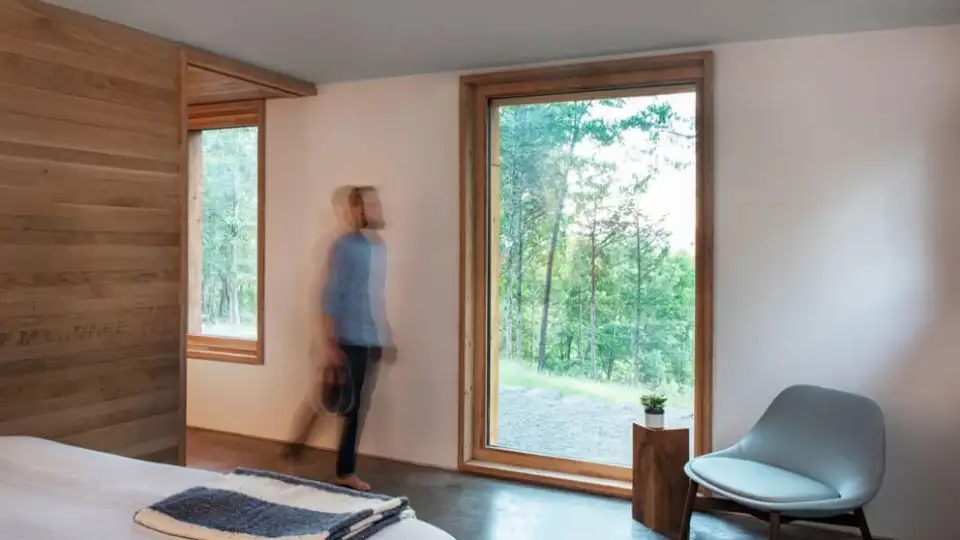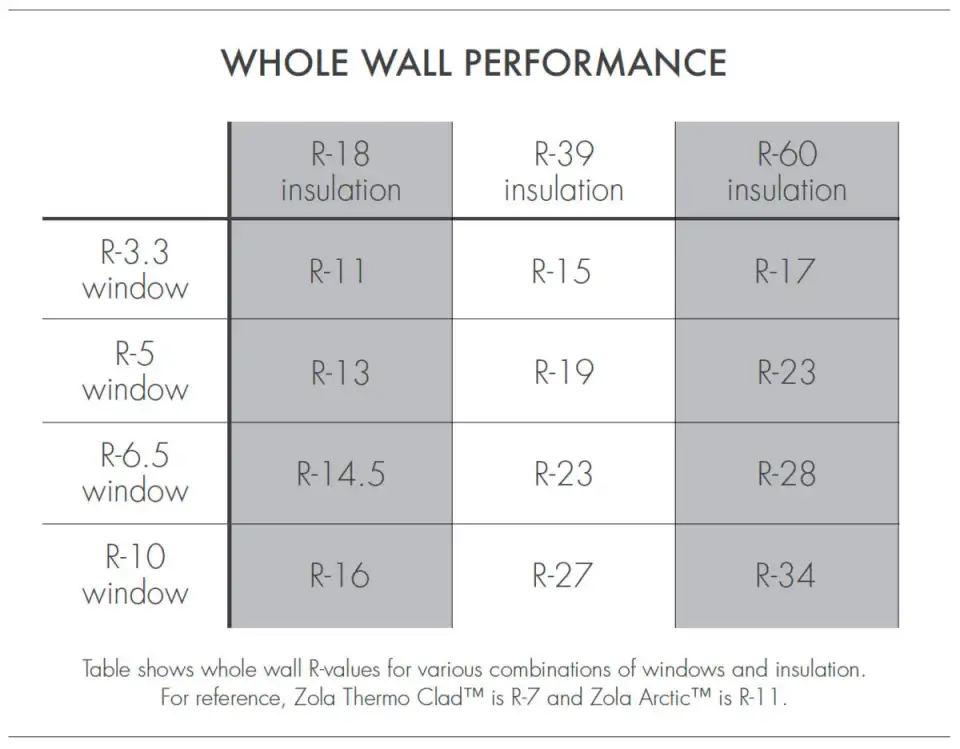
When it comes to the energy performance of a building’s exterior wall—how much heat or cold it lets through—that performance is really only as good as the weakest link in the wall. We can spend lots of time, expertise, and money on detailing a highly thermally resistant wall, but if we puncture that wall with standard-issue windows, our best laid plans can go awry.
“Windows represent a giant thermal hole that disproportionately upsets all the good work you do on the insulated wall assemblies,” says Sam Rashkin, US Department of Energy Chief Architect.

Rashkin shares this table, based on a 15% window-to-wall-ratio, to demonstrate just how significant window performance is on whole wall thermal performance. The y‑axis shows various levels of window performance, from the run-of-the-mill (ie. poor) R‑3.3 window to the Passive House-level R‑10 window. The x‑axis shows a range of wall insulation levels, from code-minimum R‑18 to super-insulated R‑60.
As the chart shows, if you start with that poor R‑3.3 window, then even insulation heroics will have little effect on whole wall performance. A more-than-doubling of wall insulation, from R‑18 to R‑39, increases overall wall performance by about a third. Even a tripling of insulation, from R‑18 to R‑60, garners a paltry 45% increase in overall wall performance.
Conversely, high‑R windows make a huge impact on overall wall performance. “We get nearly the same overall R‑value with an R‑10 window and R‑18 wall as an R‑3 window and R‑60 insulated wall,” Rashkin points out. “Yes, windows are a really big deal!”
[Photo above is of Accord Passive House.]